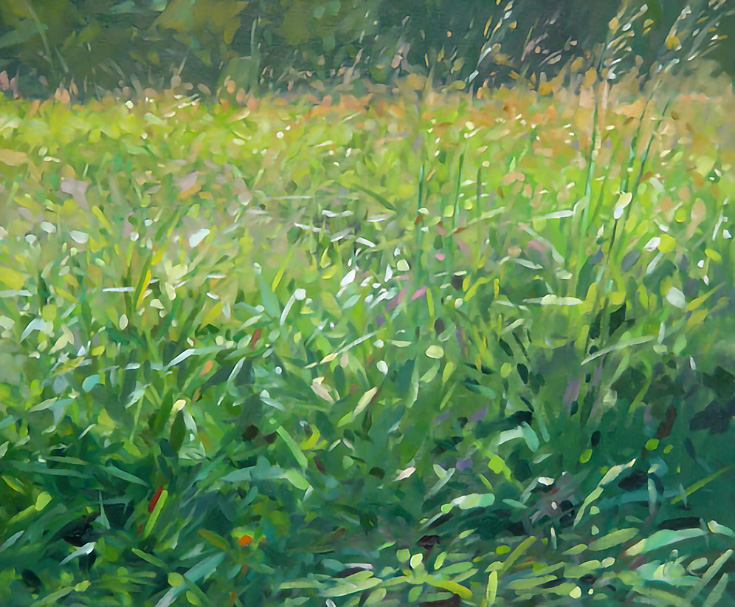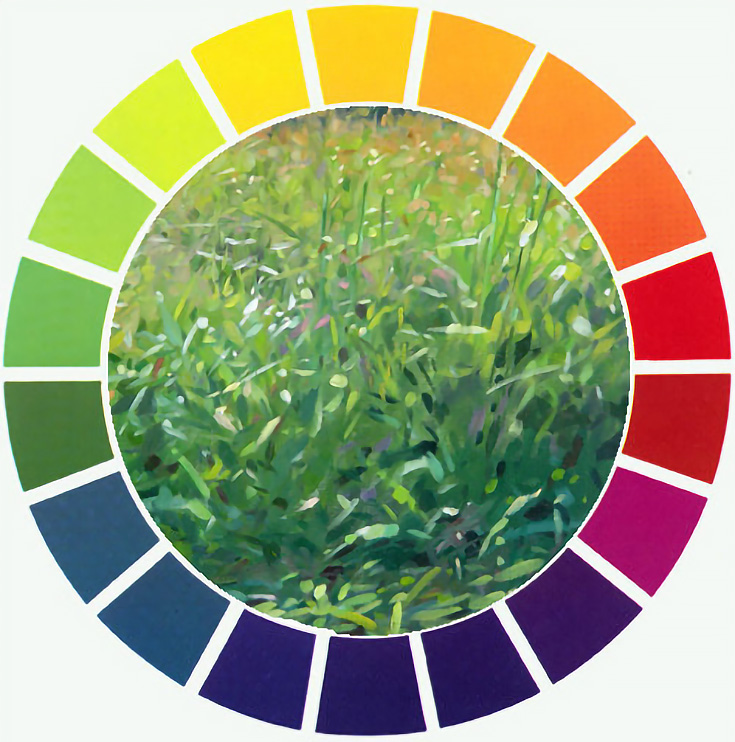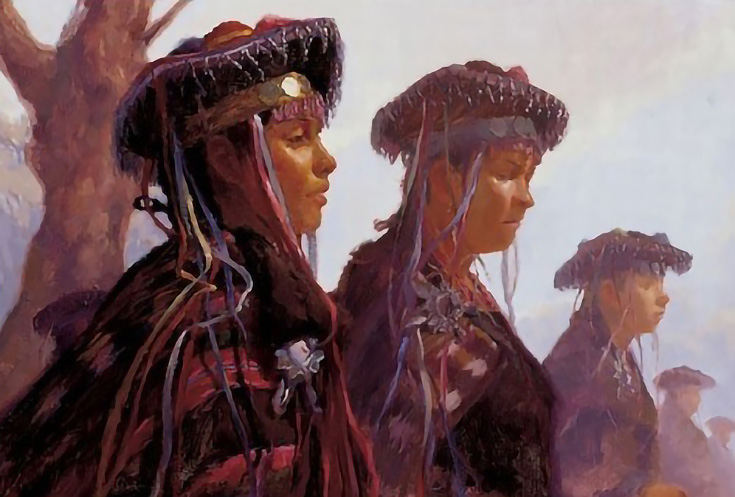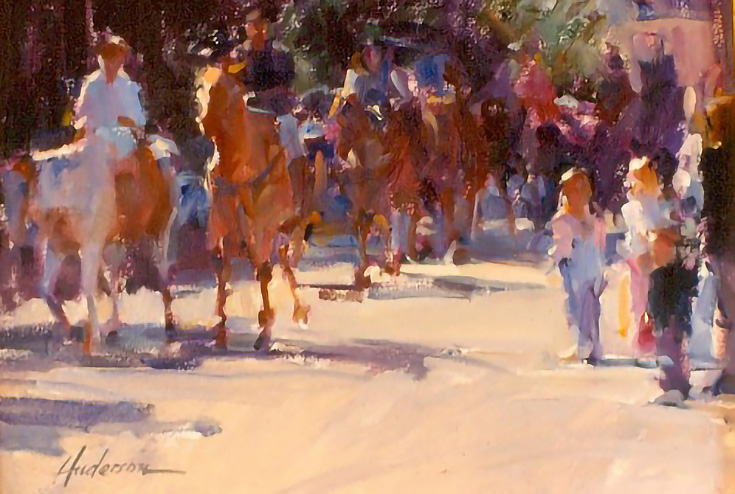Arguably the most familiar of all the principles, gradation is a gradual transition between opposites. Light changes slowly to dark, large continuously becomes small, one color gently unfolds into another. Any visual element—whether size, shape, direction, line, value, hue, intensity, temperature or texture—can be gradated just as it can be contrasted.
Most of us probably learned in our first drawing class that we use value gradation to make an image appear three-dimensional, but this principle is also a useful tool for unifying a painting. An underlying value gradation ties together things that would otherwise compete.
In his painting, "Growing Tall," Colin Page has used this strategy, unifying an otherwise unwieldy subject.
 |
| Colin Page Oil on Canvas "Growing Tall" |
There’s a lot of activity here-- titillating flecks of light, rapid directional contrasts, quick gestures—but if you squint your eyes at Page’s painting and concentrate on the darks and lights, you’ll discover an underlying gradation in value.
 |
| Page's painting in grays and blurred. |
And he's used gradation in at least two other ways: look at the colors as they appear from the bottom to the top—blue-green, green, yellow green, yellow, orange—they all transition in the same order as the colors on the color wheel.

Now shift your attention to the texture of the grasses. Larger, rather specific strokes appear at the bottom, and then strokes become progressively smaller and less defined as they move toward the top.
 |
| A portion of Page's painting in grays |
Value, hue and texture all have been gradated, letting us be captivated by the diversity of contrasts rather than confused.
Gradation occurs naturally within the mechanics of our eyes. Our visual perception interprets things as if they gradually change as they recede from where we are. Things become smaller in size, lighter in value, weaker in intensity, and less distinct in texture and detail. John Burton's painting, "Festival at La Tirana," adroitly illustrates this by exaggerating the principle.
 |
| John Burton OIl "Festival at La Tirana" |
Notice how within each subsequent figure these four elements--size, value, intensity and texture--gradually change so that the most distant figure is barely defined.
Carolyn Anderson uses the gradation principle in a similar way, but more strategically.

Rather than follow the gradation of subjects as we would normally perceive them, Anderson has guided our attention to where she wants us to look by more clearly defining the children on the right and the second horse from the left and gradating away from the discernible characteristics of these images so that, by power of suggestion, we can identify images in the distance even though their shapes are hardly identifiable.
 |
| Upper right section of Anderson's painting |
As you can see, unlimited creative possibilities abound for using gradation as a tool in painting. Whether the artist's goal is realism or something else, exciting and intriguing possibilities abound and more unified paintings will most likely be the results.
************
Note: This tutorial is a revision of one I wrote for Empty Easel, September 9, 2008.
************

1 comment:
Your posts are always convincing Diane and I salute you for that!
Post a Comment